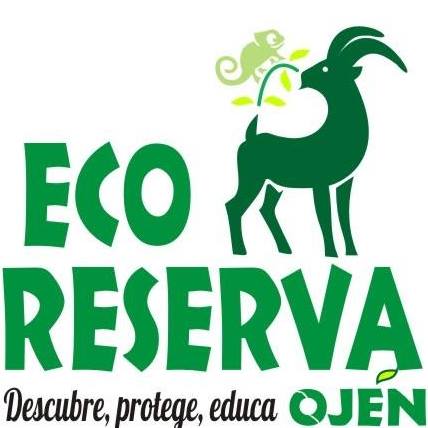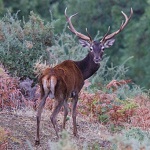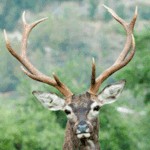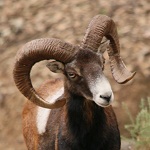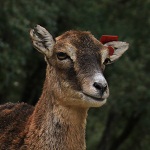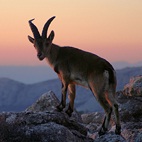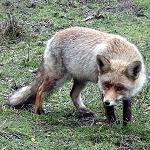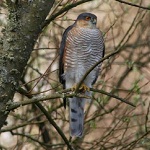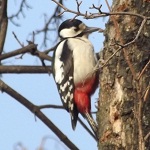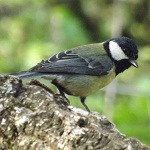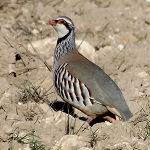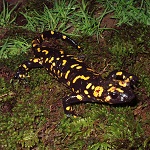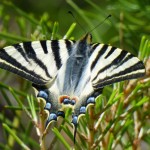Wildlife
Click on the images to access the photo gallery
Deer (Cervus elaphus)
It´s the largest animal in the Reserve and the largest wild ruminant in the Iberian Peninsula. Males have large woods that are renewed every spring, allowing them to find their fallen woods on the ground. During the visit to the Reserve, you can see herds with males, females and fawns that number about 20 individuals.
“Príncipe”
This majestic deer called “Principe“ is used to having people nearby, approaching a few meters from visitors. Principe is often seen near roads and trails as soon as he hears the noise of vehicles or conversations. It occasionally joins deer groups, and seems to really enjoy the company of groups of people, especially childrens.
Mouflon (Ovis orientalis musimon)
This wild parent of domestic sheep has been introduced into Spain and Europe from the Mediterranean islands. Often forms herds of males, females or mixed according to the season. The Reserve has a population of approximatly 17 animals, including three youg, two male and one female, born in the spring of 2016.
“Carmín”
This beautiful mouflone was raised with people and is now the Reserve´s mascot. She is very confident in her behaviour, welcoming visitors and accompanying them on hikes as a “guide“. We often hear Carmin in the forest, bleating while running in search of groups to join. From time to time, Carmin meets other sheep, and on occasion she has been seen among mountain goats during their walks.
Mountain goat / ibex (Capra pyrenaica)
This species is an Iberian endemism adapted to life in rocky areas. Although it is classified as a game reserve, Andalusia has a special management programme to ensure the survival of all its populations. In the Reserve, there is a population of about 10 specimens, with only one young for the 2016 season. Therefore, this group of animals has a particular conservation interest for the reserve team.

″Fallow deer″
Fallow deer (Dama dama)
One of the most beautiful jewels to see in the Reserve is a lonely doe. Fallow deer are similar to deer, a little smaller, with webbed antlers and reddish, spotted fur. “Gama“ is sometimes part of a deer herd, although it usually moves alone.
Others mammals
The Reserve is also home to other smaller, but no less abundant, mammals. Among the carnivores, there is a pair of badgers (Meles meles) that only move at night and sometimeshave footprints. Although there are also foxes (Vulpes vulpes vulpes) a little more brazen which sometimes show up during the day patrolling their territory in search of food. Smaller mammals such as hedgehogs, rabbits, mice and bats also live in this area.
Sparrowhawk (Accipiter nisus)
In pine and cork oak forests, the sparrowhawk is a skilled hunter which flies skillfully between the branches at full speed. It´s a bird of prey a little larger than a brown and whitish pigeon. In the Reserve is the breeding and hunting territory of a couple that is easy to see, especially during the spring and summer months.
Other birds of prey
There are other birds of prey that are also easy to see. Larger than the sparrowhawk, they fly over forests and clearings in search of small prey for food. Throughout the year, the species that can be observed in the Reserve vary, although the most frequent are the booted eagle (Hiraaetus pennatus) or the Circaète Jean-le-Blanc (Circaetus gallicus).
Spotted woodpecker (Dendrocops major)
Although other peaks are seen from time to time, this is the easiest to see and hear in the Reserve. On pine, chestnut and cork oak branches, this white, black and red bird can generally be seen climbing along the trunk. However, it´s more common to hear his beak slamming against hollow wood in which the bird looks for worms and other invertebrates.
Oak jay (Garrulus glandarius)
It´s a noisy bird that flies quickly in the forest as if it were jumping from tree to tree with a brown, white, black colour and bright blue sparks on its wings. They usually travel in groups on the highest branches in search of chestnuts and acorns, which they pick up and bury.
Small birds
If you pay attention to shrubs and tree branches, you can see small insectivorous and granivorous birds constantly moving in search of food. Blue tit, coal tit, chaffinch and various species of warblers sing as they fly between the branches and leaves, chasing each other to get the best positions.
Other birds
n addition, there are many birds in the Reserve that live with the rest of the animals in a diverse community. Groups of red partridges (Alectoris rufa) often cross roads and fly nervously when they see people while a perfectly formed cloud of pigeons flies over our heads (Columba palumbus).
Reptiles
The Mediterranean scrubland and rocky terrain are the ideal habitat for reptiles. During the tour, lizards (Psammodromus algirus) or snakes (Rhinechis scalaris) can easily be observed as they sunbathe on smooth rocks. Although the star reptile of the Reserve is the chameleon (Chamaeleo chamaeleo), difficult to see although abundant in some bush areas.
Amphibians
As in the most of the Mediterranean region, water is scarce in the Reserve. Streams and shaded forests with a layer of wet leaves are therefore places where amphibians of more terrestrial customs can be found, such as the common toad (Bufo spinosus), the penibertidic salamander (Salamandra longirostris) or the green frog (Pelophylax perezi) The amphibian group is particularly threatened by climate change, so it´s very important for us to protect them.
Invertebrates
The Reserve, with its great diversity of environments, mild climate and water areas, is home to a wealth of invertebrates. Butterflies that flutter among the bushes, such as the beautiful “macaon“ (Papilio machaon), religious mantises, some of which have a perfect camouflage, such as the “empusas“ (Empusa spp), couloured dragonflies and devil´s horses that can be seen mainly in the stream area, even spiders of the Argiope style, all harmless but with impressive colours. These and many others form the large group of invertebrates of the Reserve, come and discover them !
